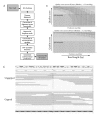Next-generation sequencing for cancer diagnostics: a practical perspective
- PMID: 22147957
- PMCID: PMC3219767
Next-generation sequencing for cancer diagnostics: a practical perspective
Abstract
Next-generation sequencing (NGS) is arguably one of the most significant technological advances in the biological sciences of the last 30 years. The second generation sequencing platforms have advanced rapidly to the point that several genomes can now be sequenced simultaneously in a single instrument run in under two weeks. Targeted DNA enrichment methods allow even higher genome throughput at a reduced cost per sample. Medical research has embraced the technology and the cancer field is at the forefront of these efforts given the genetic aspects of the disease. World-wide efforts to catalogue mutations in multiple cancer types are underway and this is likely to lead to new discoveries that will be translated to new diagnostic, prognostic and therapeutic targets. NGS is now maturing to the point where it is being considered by many laboratories for routine diagnostic use. The sensitivity, speed and reduced cost per sample make it a highly attractive platform compared to other sequencing modalities. Moreover, as we identify more genetic determinants of cancer there is a greater need to adopt multi-gene assays that can quickly and reliably sequence complete genes from individual patient samples. Whilst widespread and routine use of whole genome sequencing is likely to be a few years away, there are immediate opportunities to implement NGS for clinical use. Here we review the technology, methods and applications that can be immediately considered and some of the challenges that lie ahead.
Figures

References
-
- Chiu RW, Lo YM. Non-invasive prenatal diagnosis by fetal nucleic acid analysis in maternal plasma: the coming of age. Semin Fetal Neonatal Med. 2011;16:88–93. - PubMed
-
- Kuhlenbaumer G, Hullmann J, Appenzellerm S. Novel genomic techniques open new avenues in the analysis of monogenic disorders. Hum Mutat. 2010;32:144–51. - PubMed
LinkOut - more resources
Full Text Sources
Other Literature Sources
